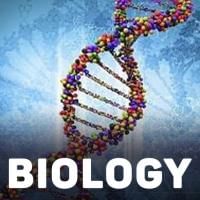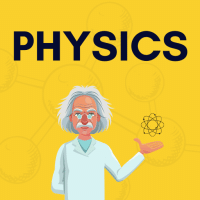NEET Exam > NEET Questions > Read the passage given below and answer the f...
Start Learning for Free
Read the passage given below and answer the following questions:
A compound (X) containing C, H and O is unreactive towards sodium. It also does not react with Schiff’s reagent. On refluxing with an excess of hydroiodic acid, (X) yields only one organic product (Y). On hydrolysis, (Y) yields a new compound (Z) which can be converted into (Y) by reaction with red phosphorus and iodine. The compound (Z) on oxidation with potassium permanganate gives a carboxylic acid. The equivalent weight of this acid is 60.
Q. The compound (X) is an
A compound (X) containing C, H and O is unreactive towards sodium. It also does not react with Schiff’s reagent. On refluxing with an excess of hydroiodic acid, (X) yields only one organic product (Y). On hydrolysis, (Y) yields a new compound (Z) which can be converted into (Y) by reaction with red phosphorus and iodine. The compound (Z) on oxidation with potassium permanganate gives a carboxylic acid. The equivalent weight of this acid is 60.
Q. The compound (X) is an
- a)acid
- b)aldehyde
- c)alcohol
- d)ether
Correct answer is option 'D'. Can you explain this answer?
| FREE This question is part of | Download PDF Attempt this Test |
Most Upvoted Answer
Read the passage given below and answer the following questions:A comp...
Reagent. Compound X is soluble in water and has a sweet taste. When compound X is heated with excess sodium hydroxide, it forms a white precipitate (Y) that is insoluble in water. Compound X does not give a positive result with Tollens' reagent or Fehling's solution.
1. What are the elements present in compound X?
- Carbon (C), Hydrogen (H), and Oxygen (O)
2. What is the behavior of compound X towards sodium?
- Compound X is unreactive towards sodium.
3. How does compound X react with Schiff reagent?
- Compound X does not react with Schiff reagent.
4. Is compound X soluble in water?
- Yes, compound X is soluble in water.
5. How does compound X taste?
- Compound X has a sweet taste.
6. What happens when compound X is heated with excess sodium hydroxide?
- When compound X is heated with excess sodium hydroxide, it forms a white precipitate (Y) that is insoluble in water.
7. Does compound X give a positive result with Tollens' reagent?
- No, compound X does not give a positive result with Tollens' reagent.
8. Does compound X give a positive result with Fehling's solution?
- No, compound X does not give a positive result with Fehling's solution.
1. What are the elements present in compound X?
- Carbon (C), Hydrogen (H), and Oxygen (O)
2. What is the behavior of compound X towards sodium?
- Compound X is unreactive towards sodium.
3. How does compound X react with Schiff reagent?
- Compound X does not react with Schiff reagent.
4. Is compound X soluble in water?
- Yes, compound X is soluble in water.
5. How does compound X taste?
- Compound X has a sweet taste.
6. What happens when compound X is heated with excess sodium hydroxide?
- When compound X is heated with excess sodium hydroxide, it forms a white precipitate (Y) that is insoluble in water.
7. Does compound X give a positive result with Tollens' reagent?
- No, compound X does not give a positive result with Tollens' reagent.
8. Does compound X give a positive result with Fehling's solution?
- No, compound X does not give a positive result with Fehling's solution.
Attention NEET Students!
To make sure you are not studying endlessly, EduRev has designed NEET study material, with Structured Courses, Videos, & Test Series. Plus get personalized analysis, doubt solving and improvement plans to achieve a great score in NEET.

|
Explore Courses for NEET exam
|

|
Similar NEET Doubts
Read the passage given below and answer the following questions:A compound (X) containing C, H and O is unreactive towards sodium. It also does not react with Schiff’s reagent. On refluxing with an excess of hydroiodic acid, (X) yields only one organic product (Y). On hydrolysis, (Y) yields a new compound (Z) which can be converted into (Y) by reaction with red phosphorus and iodine. The compound (Z) on oxidation with potassium permanganate gives a carboxylic acid. The equivalent weight of this acid is 60.Q. The compound (X) is ana)acidb)aldehydec)alcohold)etherCorrect answer is option 'D'. Can you explain this answer?
Question Description
Read the passage given below and answer the following questions:A compound (X) containing C, H and O is unreactive towards sodium. It also does not react with Schiff’s reagent. On refluxing with an excess of hydroiodic acid, (X) yields only one organic product (Y). On hydrolysis, (Y) yields a new compound (Z) which can be converted into (Y) by reaction with red phosphorus and iodine. The compound (Z) on oxidation with potassium permanganate gives a carboxylic acid. The equivalent weight of this acid is 60.Q. The compound (X) is ana)acidb)aldehydec)alcohold)etherCorrect answer is option 'D'. Can you explain this answer? for NEET 2024 is part of NEET preparation. The Question and answers have been prepared according to the NEET exam syllabus. Information about Read the passage given below and answer the following questions:A compound (X) containing C, H and O is unreactive towards sodium. It also does not react with Schiff’s reagent. On refluxing with an excess of hydroiodic acid, (X) yields only one organic product (Y). On hydrolysis, (Y) yields a new compound (Z) which can be converted into (Y) by reaction with red phosphorus and iodine. The compound (Z) on oxidation with potassium permanganate gives a carboxylic acid. The equivalent weight of this acid is 60.Q. The compound (X) is ana)acidb)aldehydec)alcohold)etherCorrect answer is option 'D'. Can you explain this answer? covers all topics & solutions for NEET 2024 Exam. Find important definitions, questions, meanings, examples, exercises and tests below for Read the passage given below and answer the following questions:A compound (X) containing C, H and O is unreactive towards sodium. It also does not react with Schiff’s reagent. On refluxing with an excess of hydroiodic acid, (X) yields only one organic product (Y). On hydrolysis, (Y) yields a new compound (Z) which can be converted into (Y) by reaction with red phosphorus and iodine. The compound (Z) on oxidation with potassium permanganate gives a carboxylic acid. The equivalent weight of this acid is 60.Q. The compound (X) is ana)acidb)aldehydec)alcohold)etherCorrect answer is option 'D'. Can you explain this answer?.
Read the passage given below and answer the following questions:A compound (X) containing C, H and O is unreactive towards sodium. It also does not react with Schiff’s reagent. On refluxing with an excess of hydroiodic acid, (X) yields only one organic product (Y). On hydrolysis, (Y) yields a new compound (Z) which can be converted into (Y) by reaction with red phosphorus and iodine. The compound (Z) on oxidation with potassium permanganate gives a carboxylic acid. The equivalent weight of this acid is 60.Q. The compound (X) is ana)acidb)aldehydec)alcohold)etherCorrect answer is option 'D'. Can you explain this answer? for NEET 2024 is part of NEET preparation. The Question and answers have been prepared according to the NEET exam syllabus. Information about Read the passage given below and answer the following questions:A compound (X) containing C, H and O is unreactive towards sodium. It also does not react with Schiff’s reagent. On refluxing with an excess of hydroiodic acid, (X) yields only one organic product (Y). On hydrolysis, (Y) yields a new compound (Z) which can be converted into (Y) by reaction with red phosphorus and iodine. The compound (Z) on oxidation with potassium permanganate gives a carboxylic acid. The equivalent weight of this acid is 60.Q. The compound (X) is ana)acidb)aldehydec)alcohold)etherCorrect answer is option 'D'. Can you explain this answer? covers all topics & solutions for NEET 2024 Exam. Find important definitions, questions, meanings, examples, exercises and tests below for Read the passage given below and answer the following questions:A compound (X) containing C, H and O is unreactive towards sodium. It also does not react with Schiff’s reagent. On refluxing with an excess of hydroiodic acid, (X) yields only one organic product (Y). On hydrolysis, (Y) yields a new compound (Z) which can be converted into (Y) by reaction with red phosphorus and iodine. The compound (Z) on oxidation with potassium permanganate gives a carboxylic acid. The equivalent weight of this acid is 60.Q. The compound (X) is ana)acidb)aldehydec)alcohold)etherCorrect answer is option 'D'. Can you explain this answer?.
Solutions for Read the passage given below and answer the following questions:A compound (X) containing C, H and O is unreactive towards sodium. It also does not react with Schiff’s reagent. On refluxing with an excess of hydroiodic acid, (X) yields only one organic product (Y). On hydrolysis, (Y) yields a new compound (Z) which can be converted into (Y) by reaction with red phosphorus and iodine. The compound (Z) on oxidation with potassium permanganate gives a carboxylic acid. The equivalent weight of this acid is 60.Q. The compound (X) is ana)acidb)aldehydec)alcohold)etherCorrect answer is option 'D'. Can you explain this answer? in English & in Hindi are available as part of our courses for NEET.
Download more important topics, notes, lectures and mock test series for NEET Exam by signing up for free.
Here you can find the meaning of Read the passage given below and answer the following questions:A compound (X) containing C, H and O is unreactive towards sodium. It also does not react with Schiff’s reagent. On refluxing with an excess of hydroiodic acid, (X) yields only one organic product (Y). On hydrolysis, (Y) yields a new compound (Z) which can be converted into (Y) by reaction with red phosphorus and iodine. The compound (Z) on oxidation with potassium permanganate gives a carboxylic acid. The equivalent weight of this acid is 60.Q. The compound (X) is ana)acidb)aldehydec)alcohold)etherCorrect answer is option 'D'. Can you explain this answer? defined & explained in the simplest way possible. Besides giving the explanation of
Read the passage given below and answer the following questions:A compound (X) containing C, H and O is unreactive towards sodium. It also does not react with Schiff’s reagent. On refluxing with an excess of hydroiodic acid, (X) yields only one organic product (Y). On hydrolysis, (Y) yields a new compound (Z) which can be converted into (Y) by reaction with red phosphorus and iodine. The compound (Z) on oxidation with potassium permanganate gives a carboxylic acid. The equivalent weight of this acid is 60.Q. The compound (X) is ana)acidb)aldehydec)alcohold)etherCorrect answer is option 'D'. Can you explain this answer?, a detailed solution for Read the passage given below and answer the following questions:A compound (X) containing C, H and O is unreactive towards sodium. It also does not react with Schiff’s reagent. On refluxing with an excess of hydroiodic acid, (X) yields only one organic product (Y). On hydrolysis, (Y) yields a new compound (Z) which can be converted into (Y) by reaction with red phosphorus and iodine. The compound (Z) on oxidation with potassium permanganate gives a carboxylic acid. The equivalent weight of this acid is 60.Q. The compound (X) is ana)acidb)aldehydec)alcohold)etherCorrect answer is option 'D'. Can you explain this answer? has been provided alongside types of Read the passage given below and answer the following questions:A compound (X) containing C, H and O is unreactive towards sodium. It also does not react with Schiff’s reagent. On refluxing with an excess of hydroiodic acid, (X) yields only one organic product (Y). On hydrolysis, (Y) yields a new compound (Z) which can be converted into (Y) by reaction with red phosphorus and iodine. The compound (Z) on oxidation with potassium permanganate gives a carboxylic acid. The equivalent weight of this acid is 60.Q. The compound (X) is ana)acidb)aldehydec)alcohold)etherCorrect answer is option 'D'. Can you explain this answer? theory, EduRev gives you an
ample number of questions to practice Read the passage given below and answer the following questions:A compound (X) containing C, H and O is unreactive towards sodium. It also does not react with Schiff’s reagent. On refluxing with an excess of hydroiodic acid, (X) yields only one organic product (Y). On hydrolysis, (Y) yields a new compound (Z) which can be converted into (Y) by reaction with red phosphorus and iodine. The compound (Z) on oxidation with potassium permanganate gives a carboxylic acid. The equivalent weight of this acid is 60.Q. The compound (X) is ana)acidb)aldehydec)alcohold)etherCorrect answer is option 'D'. Can you explain this answer? tests, examples and also practice NEET tests.

|
Explore Courses for NEET exam
|

|
Suggested Free Tests
Signup for Free!
Signup to see your scores go up within 7 days! Learn & Practice with 1000+ FREE Notes, Videos & Tests.
























